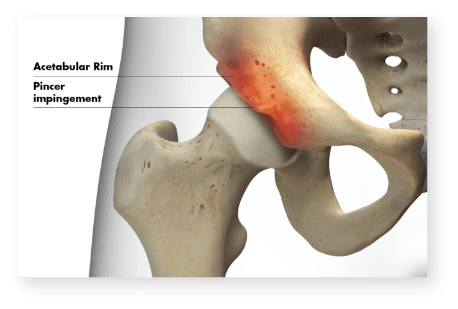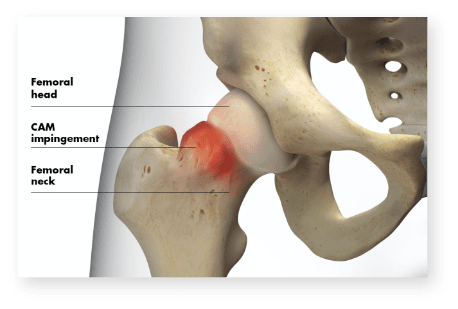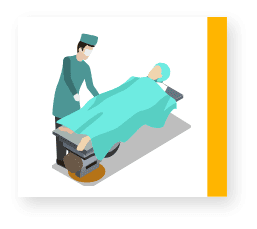Your hip pain may be due to impingement, often referred to as femoroacetabular impingement (FAI). FAI is a condition where there is an overgrowth of bone along the ball or socket of your hip joint. This extra bone may rub against your hip socket as you move your leg, causing you pain. There are two types of impingement, cam and pincer. 1-3


FAI that occurs due to the overgrowth of bone on the thigh bone (femur) is known as cam impingement, whereas excess bone on the pelvic side, which grows and extends out over the normal socket of the hip (acetabulum), is known as pincer impingement. While cam impingement is the most prominent, many patients have a combination of both types. 2,4
Understanding
labral tears
The labrum is the soft tissue that lines the socket of the hip joint and creates a suction seal to keep your hip joint stable. A labral or soft tissue tear may occur after a major injury such as a hip dislocation or simply from overuse. Most patients with impingement are at risk for tearing their labrum as well. This tear may also be related to the pain you are experiencing.2
Talk to your
doctor.
Every doctor is different, but many follow a similar approach to diagnose your hip pain. At your first appointment, your orthopaedic doctor will ask you a few questions about when and where your hip hurts to assess what’s going on. The doctor may ask you to bend and turn to imitate the movements that may be causing you pain. They may understand what’s going on right away because you show classic symptoms of a particular problem, or they may also ask you to have an additional diagnostic test, like an X-ray or an MRI.
Pain relief doesn’t always mean surgery. Your doctor may recommend a combination of treatments to alleviate your pain and help you get moving again. Learn more about your options below.

